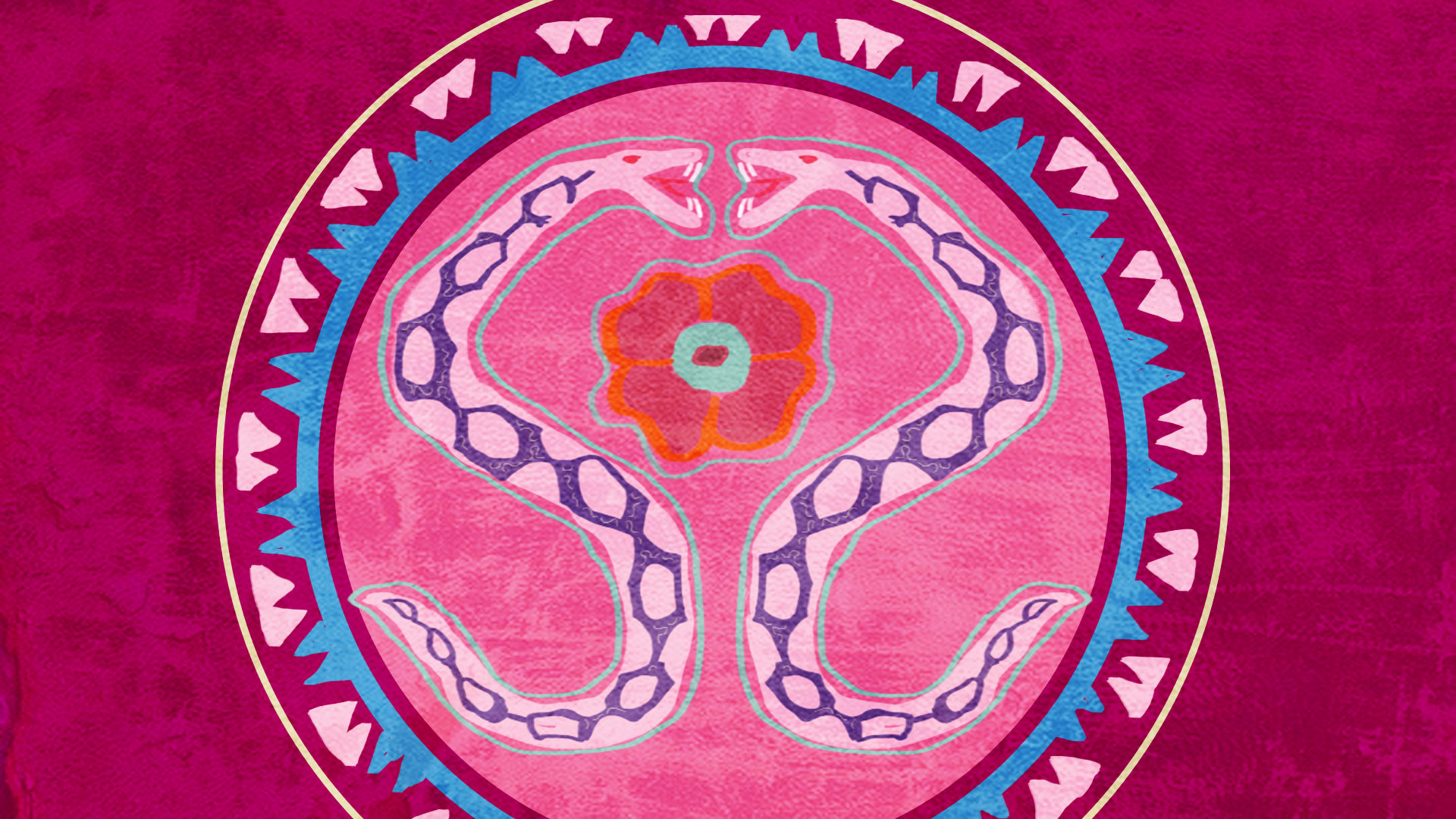- Agony and Ecstasy in the Amazon: Tobacco and the hummingbird shamans of Peru - January 27, 2022
- Toé (Brugmansia suaveolens): The Path of Day and Night - June 2, 2020
- Fifty Shades of Green - May 27, 2020
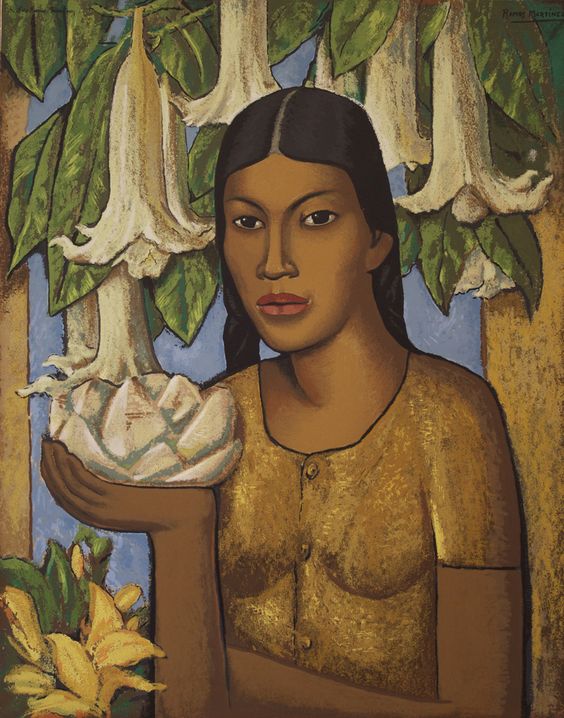
The Path of Day
Henchi, a young man from a remote Matsigenka native community in Peru’s Manu National Park, left home one morning to go hunting in the vast and preserved Amazon rainforest around his village. It rained, and towards the end of the day when he had not returned, his relatives got worried and went out to look for him. They found Henchi, half-conscious, bruised and cut by palm thorns, sprawled at the base of a large Pouteria tree, a favorite fruit of monkeys. He had climbed into the treetops to recover a monkey, fatally shot with an arrow, that had gotten stuck in the branches. But he slipped on the wet bark and fell more than fifty feet to the ground. Henchi’s spine was broken in several places, he couldn’t move and was in great pain, oscillating between consciousness and unconsciousness, between life and death. Everyone, including Henchi himself, thought he wasn’t going to survive.
His relatives carried him back to the village, rolled up in a mat. The village’s most respected shaman prepared a potent infusion made by boiling the stem-pith of a specimen of Brugmansia suaveolens from his garden. A Datura relative known in English as white angel’s trumpet, the plant is called toé or floripondio in the Peruvian Amazon. In the Matsigenka dialect of the Urubamba river it is known as saaro, while in the dialect spoken in Manu and Alto Madre de Dios the name is hayapa or jayapa, a word that seems to be a loan from the unrelated Huachipaeri language (Bennett, 1991). On many occasions, especially when they are near an actual toé plant in their house patio, the Matsigenka may call it merely kepigari, which means “poison, intoxicating.” As is the case for other shamanic plants like ayahuasca, the Matsigenka refrain from using the plant’s proper name when in close proximity to it as a way of showing respect for its spirit owner (Shepard, 1998, 2005a). The shaman offered Henchi a small gourd with a few ounces of the toé decoction, and he entered a week-long trance of induced coma. Henchi remembers almost nothing that happened during that first dose of toé: he was “dead” (in the Matsigenka language, death and loss of consciousness are synonymous) for a week.

When he woke up, the shaman asked if he was still in pain. Henchi said yes, and so the shaman made another dose of about the same size, and he spent another week in trance. This time, Henchi said that a group of small, happy people appeared, the invisible forest spirits that the Matsigenka call Saankariite, the “Invisible” or “Pure Ones.” They approached him singing and playing musical instruments. The “mother” of the plant appeared, a smiling woman dressed in a cushma, a native cotton tunic with geometric paintings. She blew tobacco smoke onto his body, sucked on his body in several places to extract palm thorns that were still inside, causing pain, and then flew with him to a distant city. There, doctors, nurses and mechanics in white uniforms took care of him, giving him medicines, taking care of his injuries and “welding” his spine with metalworking tools.
When he awoke again a week later, the shaman asked if he was still in pain. Henchi said he was better, but still felt pain. The shaman made another bowl of toé tea for him, and Henchi went into a trance again and spent another week unconscious, visiting the fantastic world of the spirits and receiving their miraculous healing powers. After three doses of toé, and three weeks of psychedelic coma, Henchi was no longer in much pain, and could move a little. Over the months, he gradually regained her strength, and in less than a year had returned to his normal activities. With his spine broken and “soldered” in several places, he remains hunchbacked, but he lives a mostly normal life, taking care of his garden, hunting and fishing, raising his children and drinking his masato (manioc beer). He acknowledges that toé, with its powerful “mother” spirit, saved his life. Considering the great distance of this remote village to the nearest hospital, and the limited medical resources at the local health post, Henchi’s story is truly a miracle of traditional medicine.
The Path of Night
Simón was one of the most talented students in his village. He had big plans to study nursing in the regional capital, Puerto Maldonado, and then return home to work in the local health post in his own community. But the course of study was difficult and highly competitive, and his family couldn’t afford to maintain him in the city, where everything has a price. He eventually returned to his community, disappointed and frustrated. Like many indigenous youth people who leave their villages during their formative years to study or work in urban centers, Simón found himself in a cultural Catch-22: lacking the appropriate academic and professional background to compete in the university setting or the urban labor market, but also no longer accustomed to the pace of village life. Simón, who was not only intelligent but also handsome and charming, married and separated several times, and had affairs and children with several women.
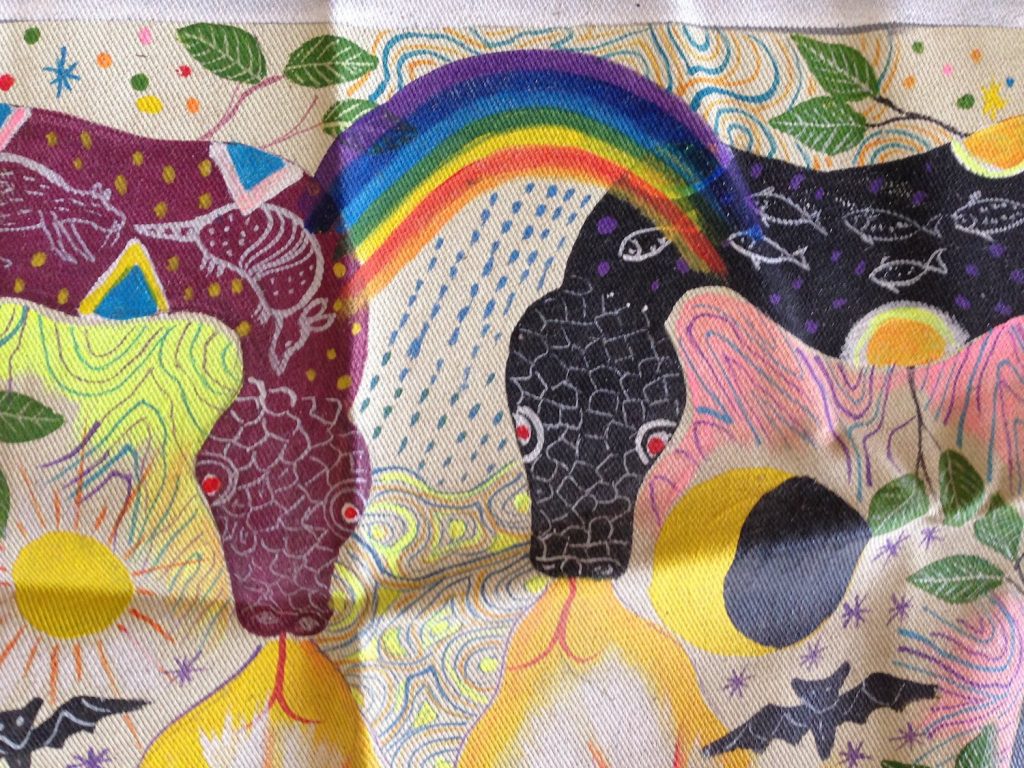
Feeling confused, Simón decided to prepare toé for himself. The Matsigenka use toé to resolve multiple kinds of problems in their lives, whether health disorders, social or spiritual maladjustments, or even, in some cases, to locate lost or stolen belongings. Simón’s grandfather was the same shaman who cured Henchi with toé, so Simon knew how to prepare the plant. He took the medicine and spent a few days walking in trance through the forest. But instead of absorbing the plant’s lessons and solving the problems in his life, Simón became “addicted” to toé, according to family members. While Matsigenka value toé as a powerful medicine for resolving various types of health and personal problems, they show great respect for the plant and are careful to avoid overindulgence. The Matsigenka say that toé has a treacherous side, that the plant’s mother is seductive, and may take a frequent user down the dark path, tempting them with the forbidden teachings of witchcraft.
And so it was with Simón. He began taking toé frequently, alone or in combination with ayahuasca. During manioc beer drinking parties, he would rip off a toé stalk (almost every Matsigenka house has a toé plant in the backyard in case of emergencies) and chew on it until he got “crazy.” One day, his newest wife had a fit of jealousy when she heard rumors that he was seeing one of his ex-wives. They argued, and Simón fled the house saying, “I’ll take ‘the poison’ [i.e., toé] until I can’t see anymore.” He made a strong dose of toe and disappeared into the woods. Three days passed, and his body was found in an abandoned field a few miles downstream. Witnesses say the body had a strange green color, which they attribute to his toé intoxication. Some say it was suicide, others say the toé tricked him in a dangerous game of seduction…
…A painted textile of the Shipibo people of the Ucayali basin in Peru shows the toé plant growing along the bodies of two snakes, one red and one black, connected by a rainbow. The title of the painting is “The Path of Day and Night,” highlighting the widespread perception of toé in indigenous Amazonia as a plant with astonishing but ambiguous powers, often associated with witchcraft and sorcery….
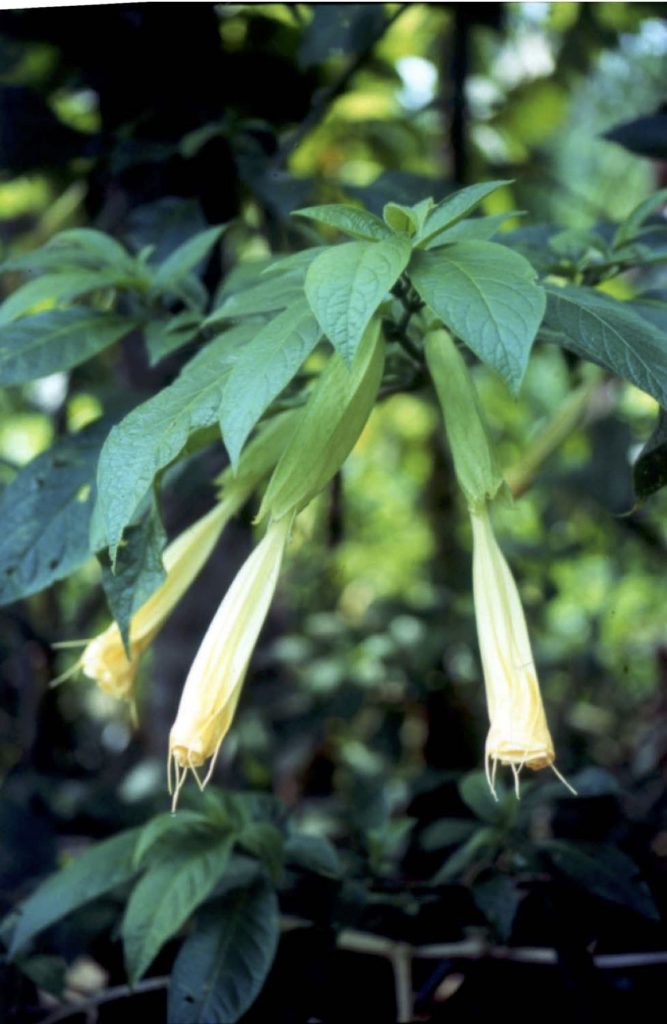
Hayapa: The Highest Authority
…Brugmansia is considered the strongest and most toxic (kepigari) of all the plants in the Matsigenka pharmacopoeia (Shepard, 1998, 2005a). Unlike ayahuasca, which is taken frequently, usually in groups including the healer and / or patient, Brugmansia is taken rarely, usually alone and only by the patient. Frequent use of Brugmansia is considered very dangerous, leading to death or madness. Brugmansia is the last resort, the highest medical authority reserved for the most drastic cases. The shaman, healer or a respected family member prepares the potion and is responsible for watching over the person during the course of intoxication. The potion is prepared with great care, attention and respect. A branch of the plant is broken by hand (it should not be cut with a metal tool, which would offend the spirit of the plant) and a few inches of the pith is scraped out. The scraped material is boiled in water for fifteen minutes or more, or steamed at high temperatures in a banana or other plant leaf. The potion is brewed away from the household to avoid contamination or impurities that could kill the patient. Doses are measured very carefully in drops or small gourds, as even a small dose can last from one night to three days. An overdose can make you hallucinate for weeks or months, go crazy for the rest of your life, or die.
The effects of Brugmansia and other psychoactive Solanaceae are very different from those of other shamanic preparations like ayahuasca, Psilocybe mushrooms, or peyote. The different tropane alkaloids present, which vary in their relative concentrations depending on the species or variety, plant part, and form of preparation, combine to create a unique visionary state…
The person under the influence of Brugmansia looks like a somnambulist, walking and dreaming with their eyes open, unable to distinguish between the material world around them and the juxtaposed visions of the spirit world. They wander through the dark forest at night with ease, their vision illuminated by the eternal sun in the realm of spirits. The person often feels thirsty and hot, removing their clothes and leaving them strewn in the bush. A patient with a chronic or apparently incurable disease may disappear for several days, walking away to the realm of the invisible Saankariite villages. There, shamans, healers, or “Madre Toé” herself, treat the patient by massaging and sucking the body to remove intrusive objects or revealing the sorcerer or evil spirits responsible for the illness. Sometimes the patient reports being taken by car or plane to distant cities where they treated by “white” doctors and nurses who use modern tools and machinery (Shepard, 1987).
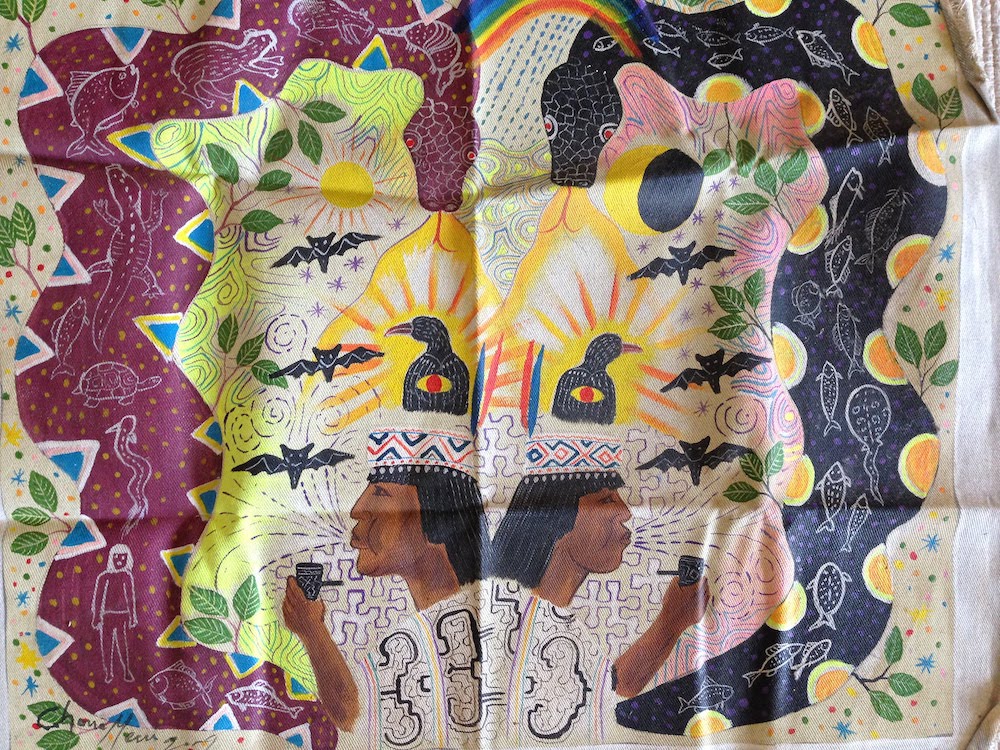
The Saankariite and especially the Mother of Toé are powerful, but they are also mischievous, and sometimes treacherous. Small, “child-sized,” these beings may reveal profound knowledge, but they can also play games with the patient, tricking the person into drinking sand like water, or eating leaves like food. Wide paths through the forest open and then close in a tangle of vegetation. Great vistas illuminate and vanish. Wise, other-worldly characters appear, speak profound and mysterious words, then suddenly disappear with a sad gaze into a handful of bones, dry branches and leaves, taking the cosmic revelations back to oblivion. Jaguars, monsters, evil giants and witches block the way, threaten, chase. The Saankariite have a lot to offer, but may also ask for concessions in return. With overuse, the toé plant’s spirit “owner” may tempt the person with dangerous sorcery teachings, or deceive them with false promises or deadly challenges.
When the effect passes and one returns to the material world, very little is remembered of the fantastical experiences of the spirit world: it all seems like a vague dream…
Excerpted and translated from chapter 6 in: B. Labate and S. Goulart (Eds.) O uso de plantas psicoativas nas Américas. Rio de Janeiro: Gramma/NEIP, 2019. 372 pgs.
This excerpt was first published by The Ethnobotanical Assembly, September 2019.
Cite as: Shepard, Glenn H. Jr. (2017) “Toé (Brugmansia suaveolens): o caminho do dia e o caminho da noite.” In: O Uso de Plantas Psicoativas Nas Américas, edited by Beatriz Caiuby Labate and Sandra Lucia Goulart. São Paulo: Compania das Letras, 121–136.
Art by Mariom Luna.
Take a minute to browse our stock:
Did you enjoy reading this article?
Please support Chacruna's work by donating to us. We are an independent organization and we offer free education and advocacy for psychedelic plant medicines. We are a team of dedicated volunteers!
Can you help Chacruna advance cultural understanding around these substances?


